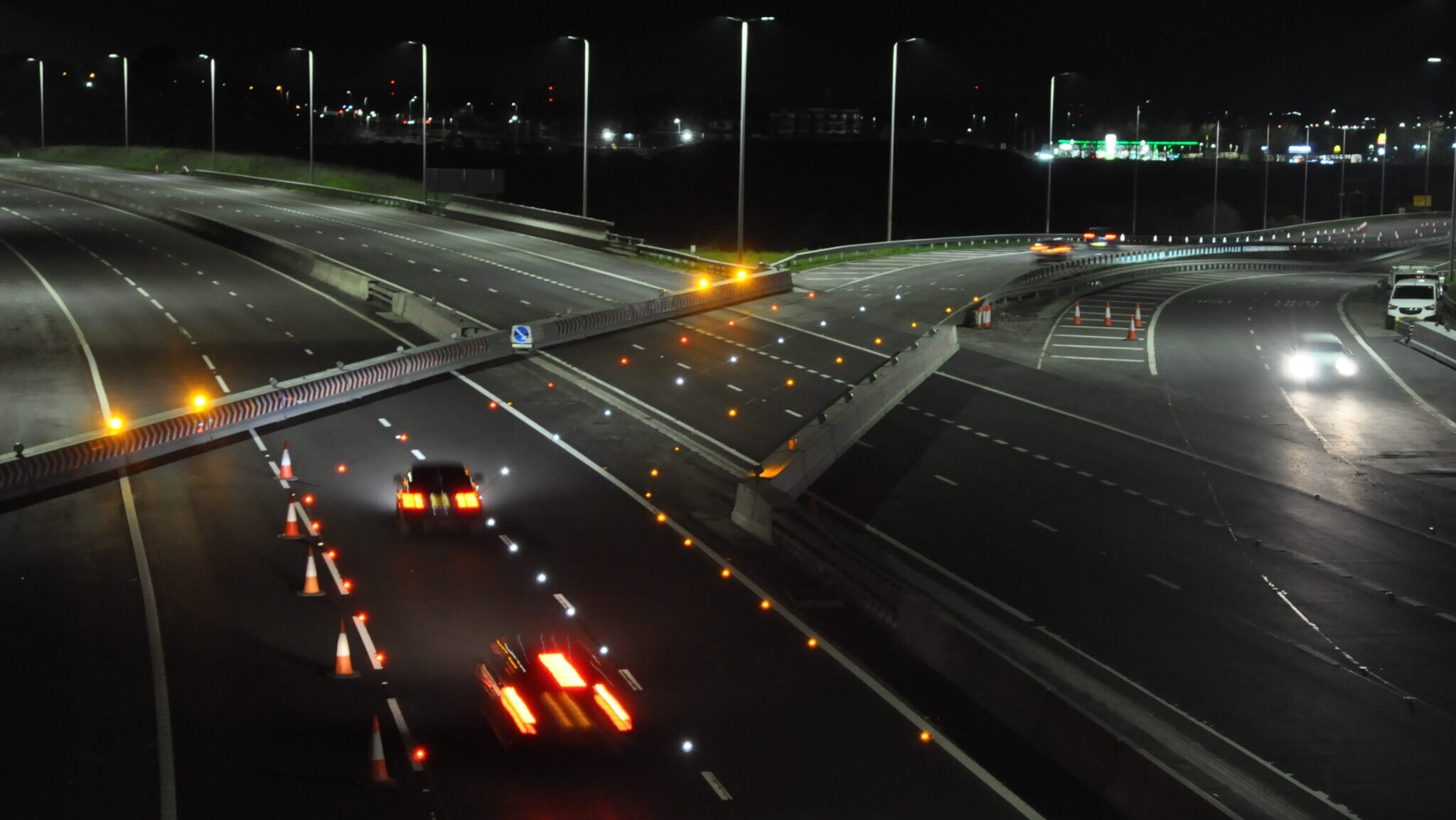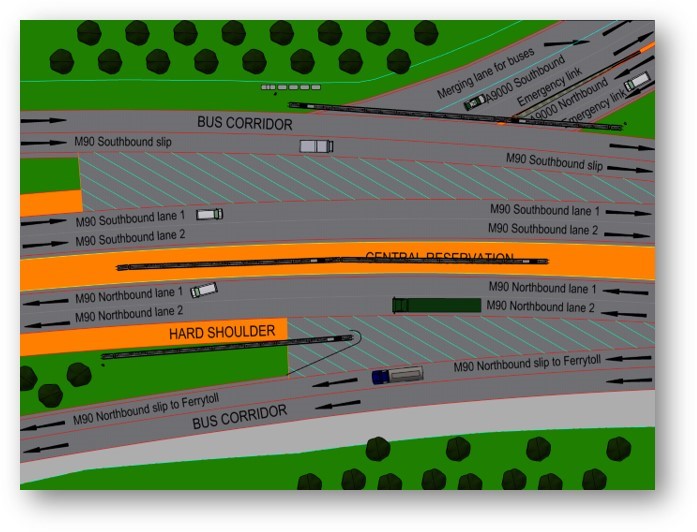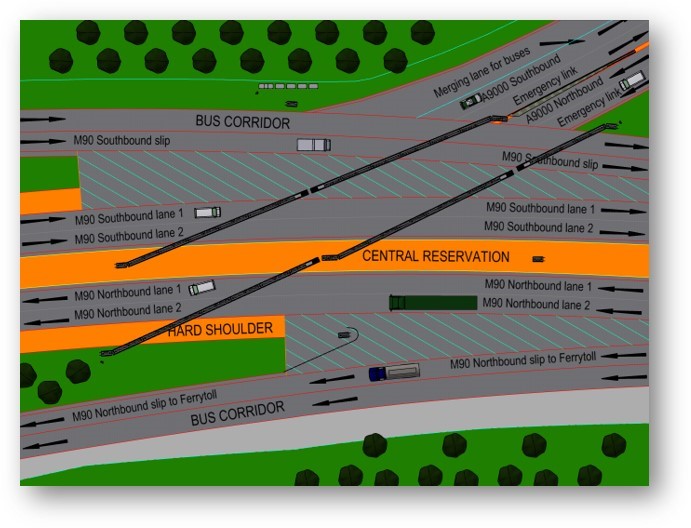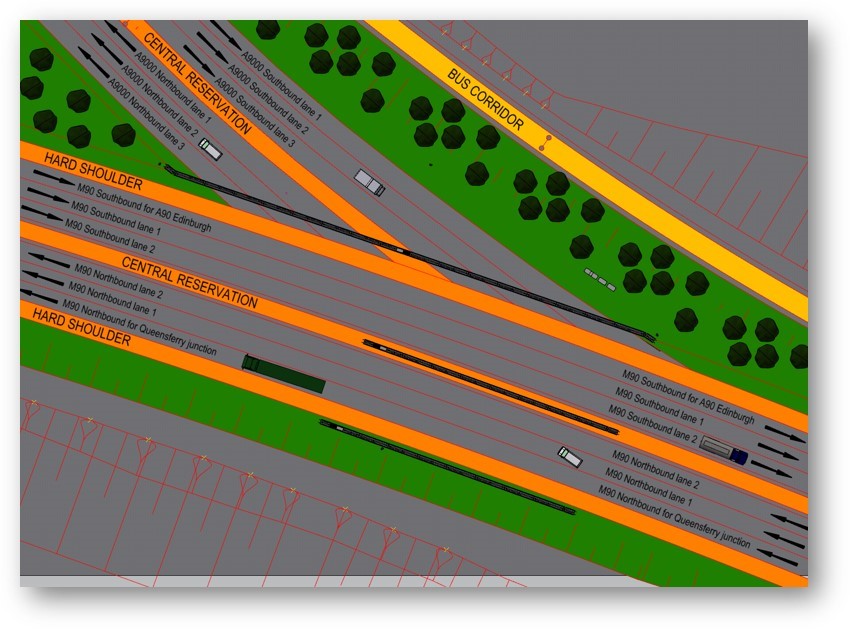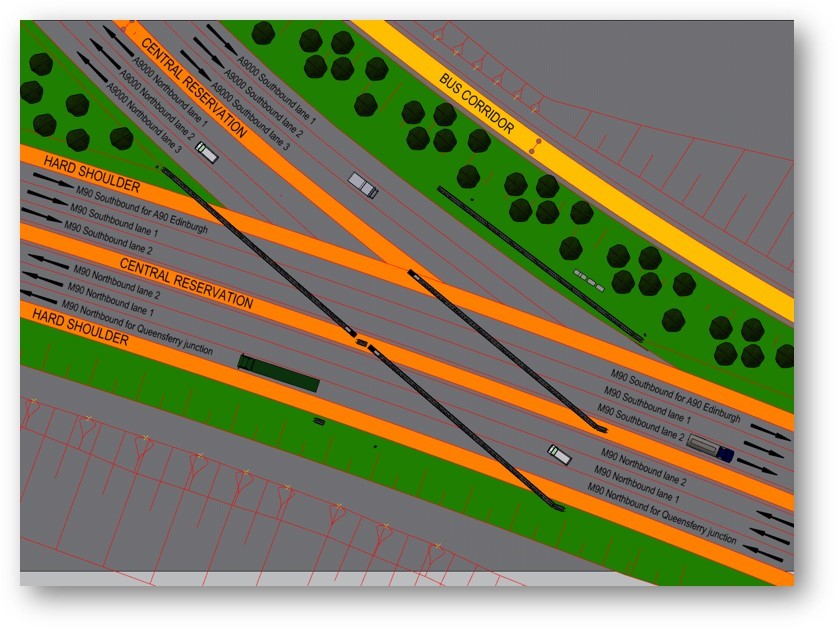BEAR Scotland has installed an automated barrier system on both sides of the Queensferry Crossing that allows traffic to be diverted onto the Forth Road Bridge more quickly, should the Queensferry Crossing need to be closed for any reason.
Previously, if the Queensferry Crossing had to be closed, M90 traffic would be diverted via Kincardine Bridge on the A985. Trials to manually erect the traffic management required for a diversion via the Forth Road Bridge took up to six hours, so Kincardine Bridge still had to be used for any shorter-term closures.
The new automated barriers dramatically reduce the time it takes to implement a diversion via the Forth Road Bridge, removing the need for most of the manual work. Manufactured by SPIE in The Netherlands, they are the first of their kind to be used in the UK.
Commenting on trials of the system carried out in November 2024, BEAR Scotland’s South East Unit Bridges Manager David Bishop said: “This new system makes diverting traffic via the Forth Road Bridge faster and safer, if the Queensferry Crossing needs to close for any reason.
“Regular trials ensure that everything is working as it should and our teams are ready to implement the diversion if and when required. We’ll carry out more in future to keep improving the process.
“It should be noted that these trials were carried out during a pre-planned and pre-mobilised operation in good weather, with the support of Police Scotland to stop traffic. In an emergency situation the implementation of the diversion is likely to take considerably longer, however our planning, training and use of technology will reduce this timescale to an absolute minimum.”
BEAR Scotland is leading this project as part of its responsibility for the South East Trunk Road Network on behalf of Transport Scotland. John Paul Construction is responsible for the completing the civils works and SPIE is responsible for the installation of the automated barrier system.

 Winter Portal
Winter Portal 

